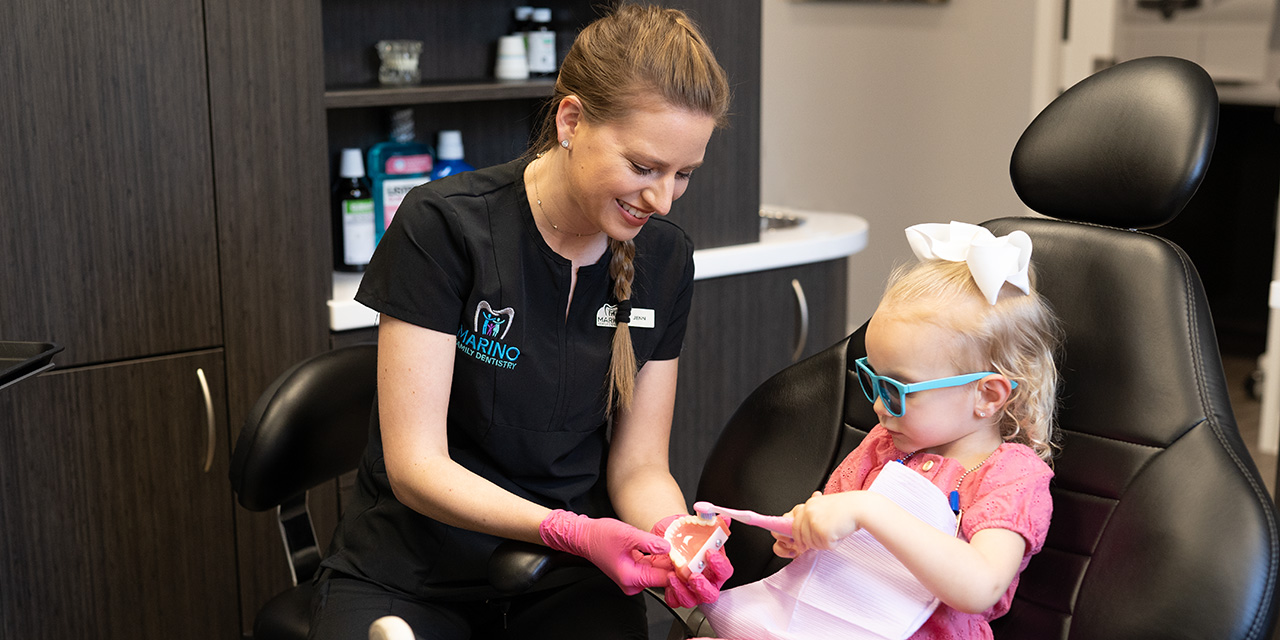Preventative Dental Solutions Are Secret to Avoiding Future Oral Health Issues
Preventative dental solutions are important in guarding against future oral wellness problems. In addition, treatments like fluoride applications and dental sealers provide an additional layer of defense, further lessening the threat of decay.
Routine Oral Check-Ups
Regular dental check-ups are a keystone of preventative oral treatment, important for maintaining optimal oral wellness. Throughout a regular exam, a dental practitioner reviews the wellness of your teeth, gum tissues, and generally oral tooth cavity, determining early indicators of possible problems such as tooth cavities, gum disease, or dental cancer cells.
Additionally, dental exams consist of diagnostic procedures such as X-rays, which give a thorough view of areas not noticeable to the naked eye. These imaging techniques can disclose concealed problems like impacted teeth, bone loss, or cysts. Prompt intervention based upon these findings can considerably mitigate the danger of complex oral treatments in the future.
In addition to diagnostics, an oral examination consists of a detailed assessment of existing dental job such as crowns, fillings, or implants. Guaranteeing these repairs stay in excellent condition aids lengthen their lifespan and performance. By adhering to a routine timetable of dental exams, individuals can proactively handle their dental health and wellness, inevitably causing a much healthier and much more certain smile.

Routine Cleansings
Along with the analyses performed during regular oral exams, routine cleansings play a fundamental duty in preventative dental treatment. These cleanings, normally carried out by oral hygienists, are important for the elimination of plaque and tartar, which are not always successfully eliminated with day-to-day brushing and flossing alone. Plaque, a sticky movie of bacteria, can solidify right into tartar if not eliminated, bring about gum illness such as gingivitis and periodontitis.
Regular cleansings involve scaling, the procedure of getting rid of plaque and tartar from the teeth's surfaces and below the gumline, and sprucing up, which smooths the teeth to make it more challenging for plaque to gather. This process not only improves dental health but likewise minimizes the threat of cavities and gum illness. In addition, regular cleanings can help in determining early indications of dental wellness issues, enabling timely interventions and minimizing the chance of more expensive and extensive therapies in the future.
Fluoride Therapies
Fluoride therapies stand as a keystone of preventative oral treatment, leveraging the power of this normally taking place mineral to strengthen tooth enamel and protect against degeneration. Fluoride, located in numerous resources such as water, tooth paste, and particular foods, plays a critical role in remineralizing tooth surfaces, making them a lot more immune to acid strikes from microorganisms and sugars in the mouth.
Professional fluoride therapies are provided in dental workplaces, typically coming in the form of a gel, foam, or varnish . These therapies include a greater concentration of Bonuses fluoride than over-the-counter items, ensuring optimum efficacy.
Fluoride therapies are particularly valuable for kids, whose creating teeth are much more at risk to decay. Adults likewise gain considerable benefits, especially those with a history of dental caries, gum illness, or that wear braces. By incorporating fluoride therapies into routine oral visits, individuals can proactively guard their dental health, making sure a more powerful, more durable smile for several years ahead.
Dental Sealants

The treatment for using oral sealers is both quick and painless. The tooth surface area is cleaned up and prepared with an unique remedy to make certain the sealer sticks effectively. Once the tooth is completely dry, the sealer product is repainted onto the enamel, where it hardens and bonds, usually with the help of a curing light. Once in position, sealants serve as a barrier, efficiently sealing out plaque and food particles.
Verdict
Preventative oral solutions, consisting of routine examinations, routine cleanings, fluoride treatments, and dental sealants, play a critical role in maintaining optimum dental wellness and avoiding future concerns. These procedures assist in very early identification and intervention for oral troubles, dramatically lowering the danger of costly and extensive therapies. Via positive care, people can attain healthier smiles and enhanced self-confidence, underscoring the importance of incorporating preventative oral practices into routine medical care.
Normal oral check-ups are a foundation of preventative dental treatment, critical for maintaining optimal oral health and wellness.In addition to diagnostics, a dental examination consists of a detailed examination of existing dental work such as implants, crowns, or dental fillings.In enhancement to the analyses performed throughout normal oral exams, regular cleansings play an essential function in preventative dental care. By incorporating dental sealers right into normal oral care, people can significantly lower their threat of future dental health and wellness problems.
Preventative dental services, consisting of normal examinations, routine cleanings, fluoride therapies, and oral sealers, play a vital function in maintaining optimal dental health and wellness and stopping future issues. (dentists springfield oregon)